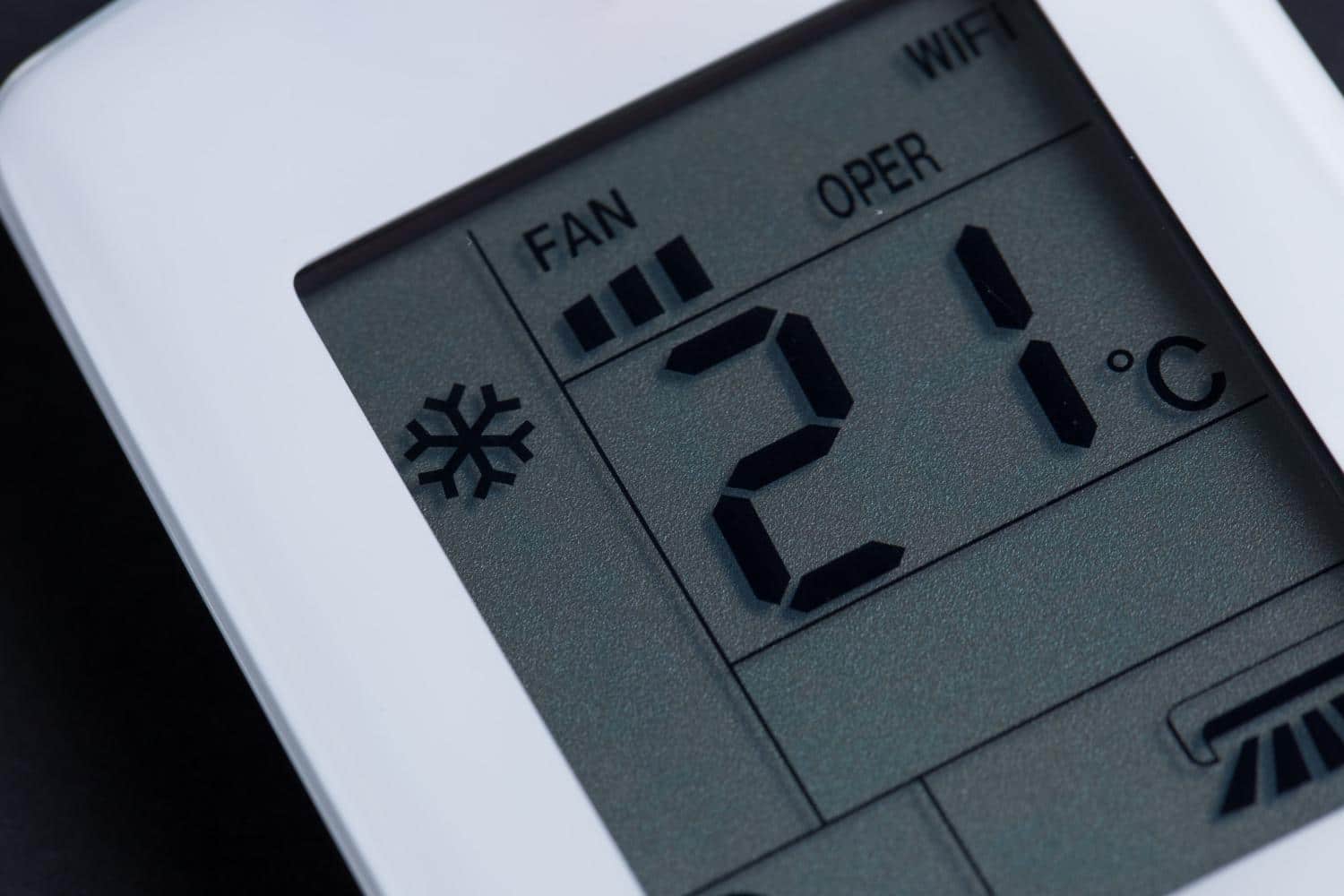Picture this: After a wet afternoon, you have just entered your living room. Your skin feels sticky, the windows are fogged, and the air is subtly damp. You grab the AC remote but hesitate; cool mode might make you cold; but, what about that enigmatic “dry” button you hardly have touched?
For many homeowners, the dry mode on AC units remains an enigma. We instinctively understand what “cool” does, but “dry” leaves us scratching our heads. Is it just a fancy dehumidifier? Does it actually improve air quality? And the million-dollar question: Is running your AC on dry mode good or bad for your health?
The truth is nuanced and depends on factors most guides overlook. As someone who’s battled both humid summers in Florida and bone-dry winters in Colorado, I’ve learned there’s no one-size-fits-all answer—but there are clear guidelines worth knowing.
Understanding Dry Mode on Air Conditioners
Unlike the cool setting that primarily lowers temperature, the dry mode on air conditioners primarily targets humidity. When you activate dry mode, your AC unit operates differently—it runs the compressor at a lower speed while keeping the fan at minimal settings.
“Many people don’t realize dry mode and dehumidifying are not technically identical,” explains HVAC specialist Marcus Chen. “The dry setting on AC units aims to remove moisture while maintaining a comfortable temperature, not drastically lowering it.”
This distinction matters because when you use AC on dry mode, you’re essentially telling your unit to prioritize moisture removal over temperature control. The system cycles on and off more frequently than in cooling mode, which creates a different indoor environment altogether.
Health Benefits of Using Dry Mode
The research linking humidity levels to health outcomes is compelling. When indoor humidity climbs above 60%, it creates ideal conditions for dust mites, mold spores, and bacteria to thrive. These microscopic troublemakers can trigger allergies, asthma attacks, and other respiratory issues.
Dr. Lydia Ramirez, a pulmonologist at Lakeside Medical Center, notes: “I’ve seen remarkable improvements in patients with chronic bronchitis and seasonal allergies when they maintain proper humidity levels at home. Dry mode can be a game-changer for them.”
Beyond respiratory health, controlling humidity offers several benefits:
- Reduced mold and mildew growth: These fungi require moisture to proliferate. Thus, dry mode helps to maintain surfaces free of their habitat.
- Improved sleep quality: According to Sleep Foundation research, ideal breathing patterns supported by humidity between 40% and 50% help to improve sleep.
- Preserved home integrity: Over time, too much moisture can compromise electronics, wallpaper, and wooden furniture.
- Decreased perception of heat: In most cases, lower humidity makes room temperature feel cooler without too much air conditioning.
For Sarah M., a freelance writer from Atlanta, discovering dry mode changed her work-from-home experience. “I used to get headaches and feel sluggish during our humid summers. Since I started using the dry setting on my AC, I’ve noticed I breathe easier and feel more alert throughout the day.”
Potential Health Concerns
Despite its benefits, running AC on dry mode isn’t without drawbacks. Excessive use can reduce indoor humidity below the recommended 40-60% range, creating a different set of problems.
“Overly dry air can irritate mucous membranes and exacerbate certain skin conditions,” warns dermatologist Dr. Howard Katz. “I’ve treated patients whose eczema flared up because their homes were too dry from constant AC use.”
Other potential concerns include:
- Respiratory tract irritation: Excessively dry air can dry out nasal passages, making them more susceptible to viruses and bacteria.
- Increased static electricity: Lower humidity levels lead to more static discharge, which can be annoying and potentially harmful to sensitive electronics.
- Energy consumption: Dry mode typically uses less energy than cool mode, but more than fan-only settings.
- Inadequate cooling: In extremely hot conditions, dry mode might not provide sufficient temperature reduction for comfort.
The key is finding balance. When your main concern is humidity—not temperature—dry mode performs best. Alternating between cool and dry modes may be more successful than depending on just one setting if you are dealing with both high heat and humidity.
Best Practices for Using Dry Mode

To maximize health benefits while minimizing risks, consider these guidelines for using AC on dry mode:
- Monitor humidity levels: To make sure your house stays between 40 and 60 percent, buy a hygrometer—a humidity meter.
- Use dry mode strategically: It works best in naturally humid climates and areas of your house likely to be moist (basements, bathrooms) during rainy seasons.
- Combine with proper ventilation: To help preserve air quality even in dry mode, momentarily open windows during less humid parts of the day.
- Maintain your unit: Frequent filter and coil cleaning guarantees the effective operation of your air conditioner, free of contaminants circulation.
James Wilson, a home environment consultant, suggests: “Try using dry mode for 2-3 hours, then switching to fan mode for an hour. This cycle prevents over-drying while still controlling humidity.”
Climate considerations matter, too. If you live in already dry regions like Arizona or Nevada, dry mode could potentially make indoor air uncomfortably arid. Conversely, in places like Florida or Louisiana, it might be your best defense against persistent humidity.
Expert Recommendations
Indoor air quality specialists generally agree that dry mode benefits outweigh concerns when used appropriately.
“The key is context,” explains environmental health researcher Dr. Alisha Patel. “For most people, especially those with respiratory issues, maintaining proper humidity levels is crucial. Dry mode can help achieve that when outdoor conditions are working against you.”
Her recommendations include:
- For asthma and allergy sufferers: Use dry mode more frequently, especially during high pollen seasons or after rain.
- For those with skin conditions: Use dry mode conservatively and consider a humidifier in bedrooms if you notice increased skin dryness.
- For homes with mold issues: Utilize dry mode consistently in problem areas, paired with proper ventilation.
HVAC professional Thomas Rodrigues adds a practical perspective: “Beyond health, there’s a comfort factor. Many people sleep better with dry mode because it removes that ‘clammy’ feeling without making the room too cold.”
Finding Your Humidity Sweet Spot: The Verdict on Dry Mode
When used carefully, dry mode on air conditioners clearly provides major health advantages when considering the data. It’s not a cure-all, and if used properly, it has no negative effects. The secret is knowing your particular home environment, climate reality, and health needs.
If you’re still unsure whether dry mode is right for you, try this approach: Use it for a week while tracking how you feel. Note any changes in sleep quality, respiratory comfort, and overall wellbeing. Your body often provides the best feedback about your environment.
Remember that different rooms may have different needs. Bathrooms and kitchens typically benefit more from dry mode than bedrooms or living areas. And seasonal adjustments are essential—what works in summer might not be ideal in winter.
Ultimately, the dry setting on AC units gives us an additional tool for creating healthier indoor environments. Rather than viewing it as simply another button on your remote, consider it a specific solution for humidity-related challenges. Your lungs, skin, and overall comfort might thank you for finally solving the humidity puzzle that’s been affecting your health.








